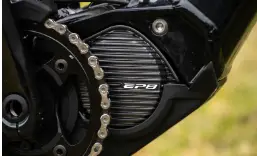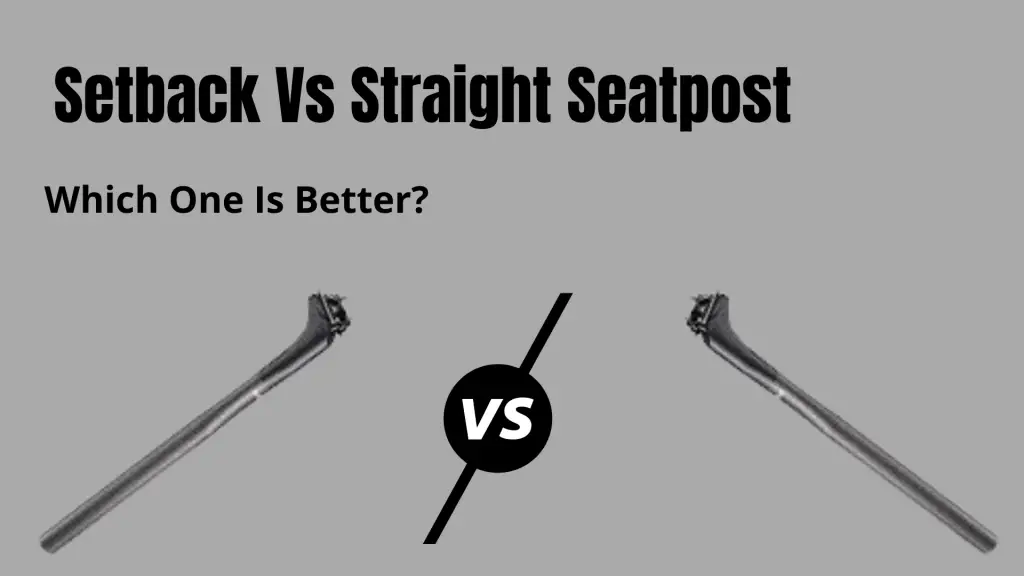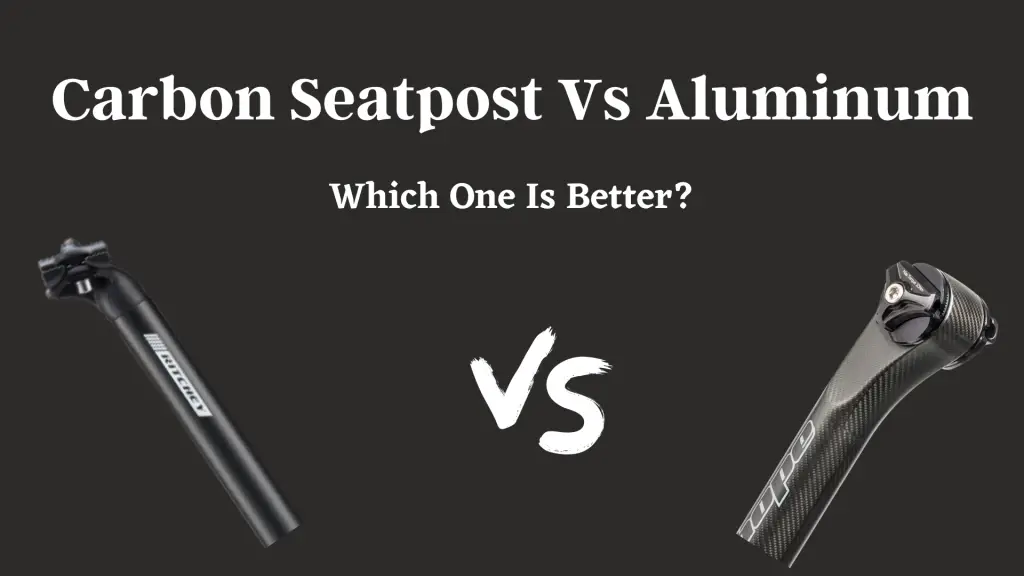Experimenting with your favorite bike is worth it if it all goes right! And the same is true if you’re thinking of installing a 14mm fork on a hardtail. But is it even possible?
Can you really put a 140mm fork on hardtail?
Yes, you can collab a 140mm fork with your hardtail. But if your hardtail frame is 100mm then it can be a gamble. It is always suggested to put a fork that has a 20mm distance from the frame. So, it’s the safest to put a fork in the travel range of 80mm to 120mm if you have a 100mm frame.
Why is that, though? You might have a lot going on in your head right now. Let’s take a closer look at the content of the article.
A Small Discussion on Hardtail and 140mm fork!
Hardtail mountain bikes are one of the most flexible bikes available. This enables riders to face a variety of terrain.
Off-road riding is the primary purpose of hardtail bikes. Hardtail motorcycles don’t have rear shocks. Thus their back wheels are directly linked to the frame, hence the name.

Source: bikerumor.com
A front suspension fork is used on the majority of hardtail bikes. But a few employ a totally rigid frame.
Because there are no rear suspensions. Riders are forced to endure the greater impact. Rather than the suspension system carrying the bulk of the stress. So, it is a matter of when you are up with a hardtail fork upgrade.
Even so, you must be aware of the distinctions between dual crown and triple crown fork check this article.
If you’re upgrading from a genuinely entry-level fork for example 100mm to 140mm, you could save weight. But more travel necessitates longer stanchions, which means the item will be heavier. Stanchions grow in diameter as forks get longer. That prevents the fork from bending like a wet noodle.
A modest increase in length is recommended if you wish to maintain your weight. For example, 10mm from 140mm to 150mm. Those will result in a noticeable performance boost with minimal weight loss.
Is 140mm Fork Good for Your Hardtail Fork Setup!
Let’s get to the main point now.
If you have a hardtail frame the fork travel difference should be 20mm. So, if you have a 120mm hardtail frame you can use a 100mm to 140mm fork.
However, this does not exclude the use of a 140mm fork. With this hardtail fork setup, you’e going to get a different biking experience. This involves an entirely different geometric and handling position with your 100mm frame.
Then again if you have a 120mm hardtail frame you can easily use a 140mm fork. There will be no issue with that. But most of the common and popular hardtail frames are 100mm that’s the issue.
But what about a trail bike?
A trail bike’s input might be dulled by too much travel. For a 29er, we propose 34mm stanchions at 130-140mm. It comes with the possibility of up to 150mm for the lower 27.5in wheel size.
Think about it before you go with a 140mm travel fork with your hardtail frame. Putting a 140mm fork on a hardtail will drastically alter the design. If that was designed for 100mm of travel.
This might jeopardize the frame manufacturer’s warranty. As they didn’t intend for riders to write vicious 140mm checks that their frames couldn’t cash.
Bike designers use a holistic approach to bike design. Also mixing geometry and spec lists with the bike’s intended function.
People who have spent time in the mountains know that pushing boundaries can be a lot of fun. If you’re willing to accept the consequences.
Aside from considerations like weight, stiffness, and economy, there is another point. Riders should consider how a longer fork would alter the bike’s design.
The fork lengthens, raising the handlebars and lowering the head tube angle. Each 20mm of travel gained corresponds to a one-degree variation in head tube angle, on average.
The bike’s wheelbase will also be lengthened, and the bottom bracket will be lifted somewhat. One might expect, that when these changes in geometry are carried to extremes, performance might suffer significantly.
The longer the head tube, the more stable the bike feels when riding downhill. By extending the wheelbase, the same effect may be obtained. Isn’t it fantastic?
After all, everything has a drawback. These modifications have resulted in: the bike will become a bit more sluggish. And slow to respond to steering.
Selecting where you want to increase performance is important. And where you’re willing to make tradeoffs is a part of upgrading your fork.
Bike forks that are up to 20mm bigger than the manufacturer’s specifications are regularly accepted. If you must, go beyond that.
Be aware that you may end up with a bike that the manufacturer denied. That’s not to suggest it’ll be terrible, but it’s something to think about.
And don’t forget to maintain your bike properly.
A vital element of maintaining suspension fork is the lubricants used in it. And a slight difference in lube quality can result in a noticeable difference in performance. Not only does a quality lubricant lasts longer than a regular lube, it also reduces more friction.
To keep your suspension fork in top-notch shape, we prepared a list of some of the best lube brands. Here, have a look:
These lubes are the best of their kind and their overly positive reviews speaks in their favor. With these, you can get an extra edge over your performance. Take the next leap at your riding experience.
Problems and Alternatives of 140mm Fork for Hardtail Frames
As we have already known the fork will work fine if the gap is 20mm. Most of the hardtail frames in the market are 100mm frames. 120mm and 140mm hardtail frames are not as popular as 100 mm frames.
That’s why a 120mm fork on 100mm frame is the maximum limit. 100mm fork for your 100mm hardtail frame will be a perfect choice. You can also go for an 80mm fork if you want.
If you have the 100mm hardtail and want to use a 140mm fork then it can be a little gimmicky. But some riders may like the experience of just increasing the fork’s air spring pressure.
That’s not to suggest a hardtail with 140mm travel forks can’t get the job done. It’s difficult to strike a balance between efficiency and performance on a hardtail.
FAQs
Can You Put a 140mm Fork on XC Bike?
Yes, you can put a 140mm fork on your XC bike. Going from 120 to 140 mm should be completely OK. It will most likely slack your front end by 1 degree and raise your bb height by 1/2 inch. I believe that going up to 160 mm on your fork is pushing the limits.
Can You Put 160mm Forks on a Hardtail?
Yes, you can if your hardtail frame is 140mm or 160 mm. Some riders may enjoy the feeling of just increasing the pressure on their forks’ air springs. That isn’t to suggest that a hardtail can’t function with 160mm travel forks. The balance of efficiency and performance on a hardtail is difficult.
Can I Put a 150mm Fork on a 120mm Bike?
Yes, although that may be a little excessive. It will make your bike slacker and increase the bottom bracket if all other factors are equal. While you may like a little more travel on the way down there can be a problem. The higher BB has no effect on cornering. So, it’s a trade-off.
Conclusion
We answered your questions on whether you can place a 140mm fork on hardtail or not! Though it will work on the hardtail, there might be some issues with the riding experience.
If you have any more questions, please leave them in the comments area.
Till then, happy biking.





